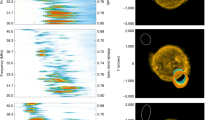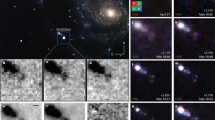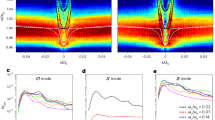Abstract
IN some recent experiments of great interest and importance, both Reber1 and Southworth2 have succeeded in detecting and measuring solar radiation in the short-wave end of the radio spectrum. The wave-length employed by Reber was 187 cm., while the three wave-lengths used by Southworth, although not precisely specified, were of the, order of 10 cm. and less. In both series of experiments it was found that the intensity of solar radiation approximately conformed to that emitted by a black body at a temperature of 6,000° K. In another series of experiments of somewhat allied character, Jansky is reported to have been unable to detect solar radiation using a longer wave-length, of 14·6 metres, although his apparatus was sufficiently sensitive to detect the electromagnetic radiation, which he discovered in 1931, coming from the vicinity of the Milky Way.
This is a preview of subscription content, access via your institution
Access options
Subscribe to this journal
Receive 51 print issues and online access
$199.00 per year
only $3.90 per issue
Buy this article
- Purchase on SpringerLink
- Instant access to full article PDF
Prices may be subject to local taxes which are calculated during checkout
Similar content being viewed by others
References
Reber, Astrophys. J., 100, 279 (1944).
Southworth, J. Franklin Inst., 239, 285 (1945).
Author information
Authors and Affiliations
Rights and permissions
About this article
Cite this article
APPLETON, E. Departure of Long-Wave Solar Radiation from Black-Body Intensity. Nature 156, 534–535 (1945). https://doi.org/10.1038/156534b0
Issue date:
DOI: https://doi.org/10.1038/156534b0
This article is cited by
-
First Solar Radio Burst Observations by the Mexican Array Radio Telescope (MEXART) at 140 MHz
Solar Physics (2022)
-
Fast Radio Bursts
Journal of Astrophysics and Astronomy (2017)



